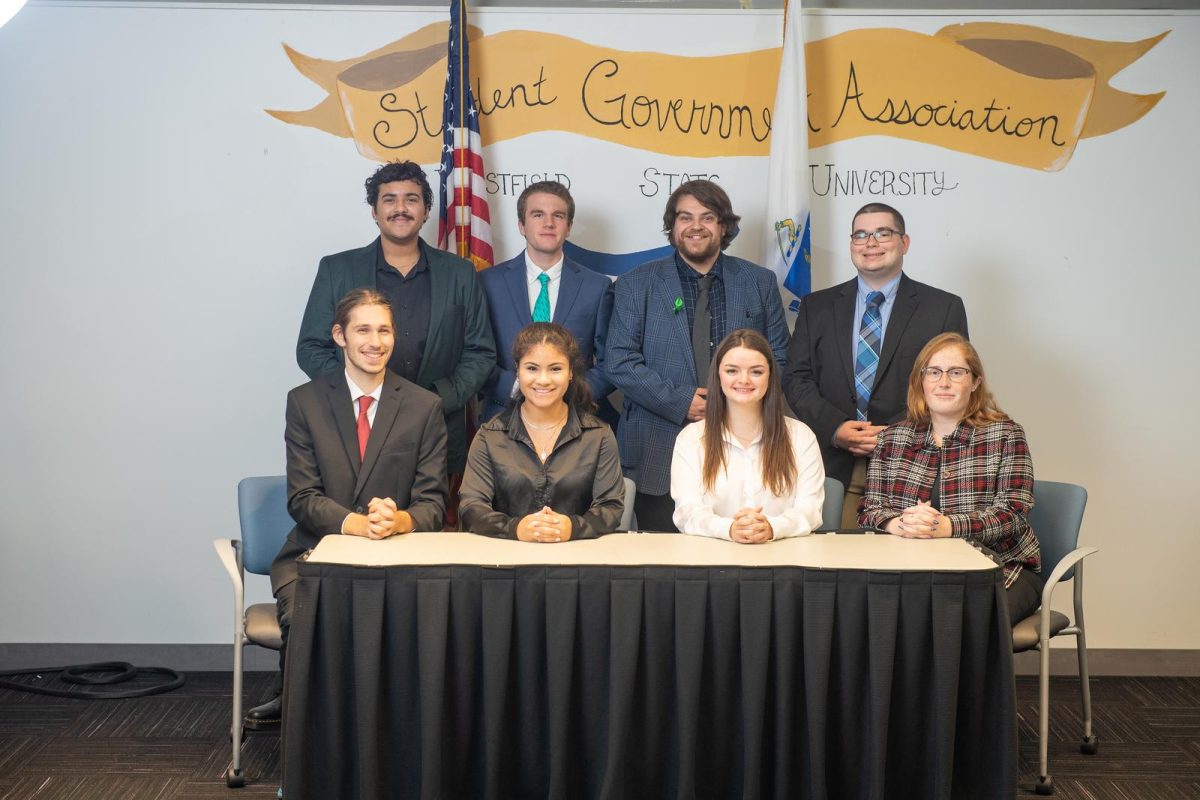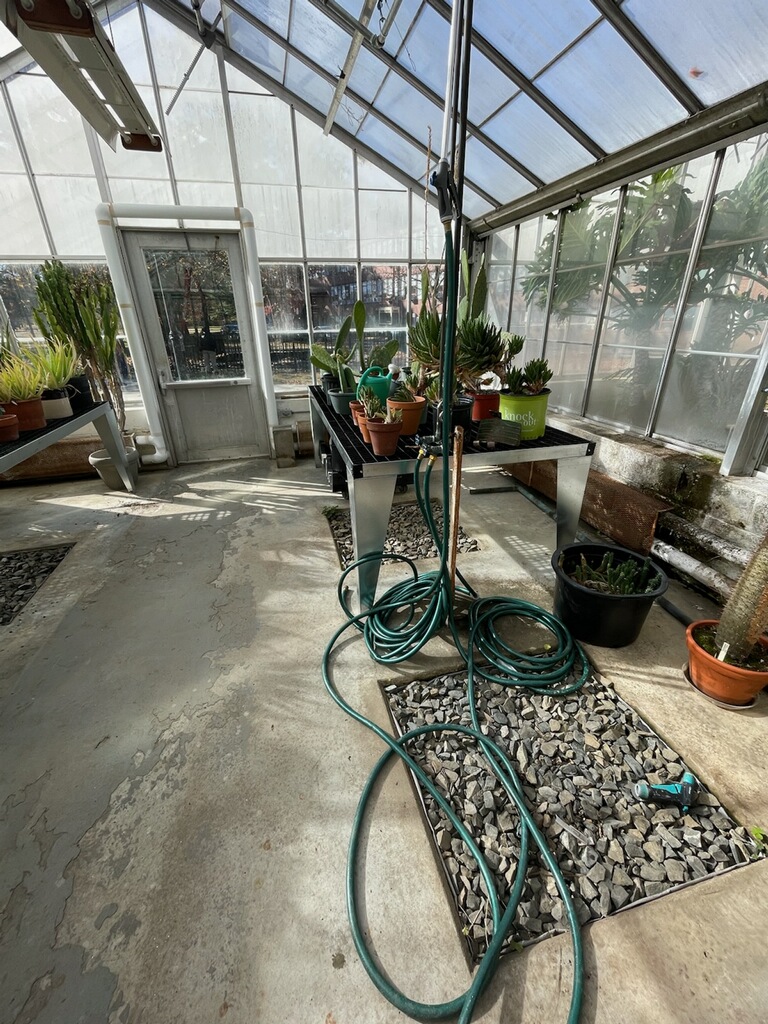With the rise of urbanization, green spaces are increasingly under threat, and Westfield State University’s students are rising to combat this environmental challenge.
The Westfield State University Environmental Science Department launched a new class for the Fall 2023 semester called “Greening the WSU Campus.” The course was taught by Dr. Timothy Parshall and encouraged students to stretch their imaginations to design tangible, budget-friendly project ideas to make Westfield State’s campus more eco-friendly and aesthetically pleasing.
In particular, Westfield State Environmental Science students Danielle Ansell, Emma Brault, and Connor Owen chose to tackle the neglected area located next to Tim and Jeanne’s Dining Commons.
Starting in September 2023, their goal was “to bring back natural spaces into altered and urbanized areas by creating an environmentally beneficial communal space outside of the Dining Commons,” says Ansell, who is also minoring in Wetlands Planning & Management and Restoration Ecology.
The patio next to the Dining Commons has been underused since previous attempts to start a garden space were unsuccessful due to a lack of maintenance during the summer months. However, there is hope to “create a space for students to come together and study and (just) be between classes,” says Ansell.
In their best-case scenario project design, Ansell, Brault, and Owen proposed a walk-through garden to immerse students in a natural environment with native plants and wildflowers, benches, and birdhouses.

Special care was taken to include plants that attract pollinators such as bees, butterflies, and many insects since pollinators are the backbone of agricultural and ecological systems. This is also significant because Westfield State is currently listed as a Bee Campus, an initiative that encourages institutions to provide habitat and resources for pollinators.
The garden would cater to birds, and hummingbirds specifically, because they are allergen-friendly and reduce the number of bee stings.
Also included in this project design, given the proper channels and funding, was a greenhouse with raised beds to supply the Dining Commons with herbs and spices. Locally sourced food ingredients would also boost Westfield State’s ecological footprint.
Ansell, Brault, and Owen hope that the space could provide educational opportunities through the work-study program and with student research projects, with the added bonus of attracting new students to the university by beautifying the center of campus.
Moving forward, the Environmental Science Department hopes to spread its message of fostering biodiversity by introducing new courses and continuing the efforts to rehabilitate the greenhouses located next to Wilson Hall.

































Jeff • Dec 16, 2023 at 5:00 pm
That sounds amazing! I can’t wait to see this happen!!